I try to go for a walk every day, it adds a bit of routine which is necessary when writing at home in the winter nearly every day. Sometimes I go along the canal, other times through parks and across the countryside along ancient pathways. Many of these areas are currently partially flooded as much of the rest of the country is and so this week I have been walking through my local wood.
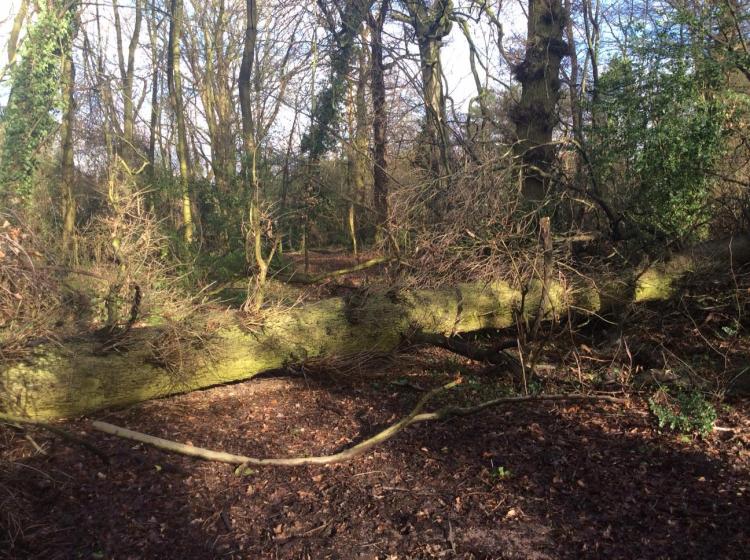
I’ve written before how much I adore trees and woodland so I looked forward to my walks, wondering what birds I will see, the dozens of playful squirrels and maybe the odd fox or deer. This time though I almost got lost in my local wood that I walk through at least 100 hundred times a year. That’s because so many trees have blown over. Pathways are blocked, huge oak trees blown over, bringing down many others as the fall. Shorter more pliable trees have had their trunks or main branches snapped.
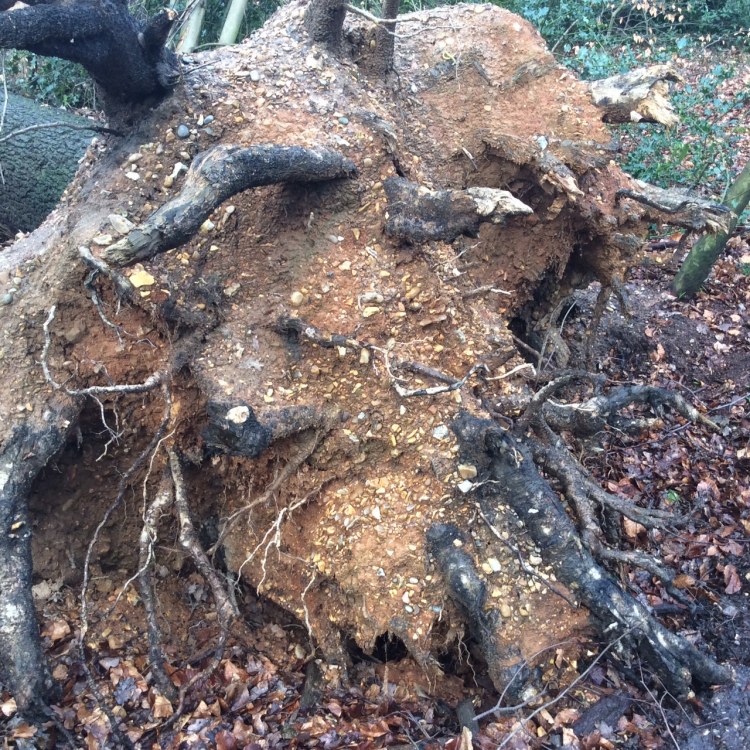
Oaks are my favourite trees, long lived, strong, great for wood products with each one home to at least dozens if not hundreds of species. The oak tree is a national symbol of England and the oak leaf is the symbol of the conservation body, The Natural Trust. Many of the famous oaks we see up and down the land were actually deliberately planted centuries ago at the urging of Nelson and the Admiralty to ensure a plentiful supply of wood for use in naval ships. Nelson was a visionary but not quite so far-seeing that he foresaw iron and steel ships that would appear just a few decades later. You can see why he was so concerned though as around 6,000 oak trees were needed to construct HMS Victory, just one of a huge fleet of ships.
Now these oaks have reached maturity and are at the time they give maximum benefit to wildlife and to humans both to look at and to protect from wind, shade from the summer sun as well as removing toxins from the air. Recently it has come to notice of some that some of the current flooding could have been avoided if high altitude woodland hadn’t been removed for poor quality farming. This is because trees and especially oaks require a lot of water and they get that through their roots that suck up vast quantities every day. This is probably the reason that walking through the woods this week was simply muddy and not flooded with water.
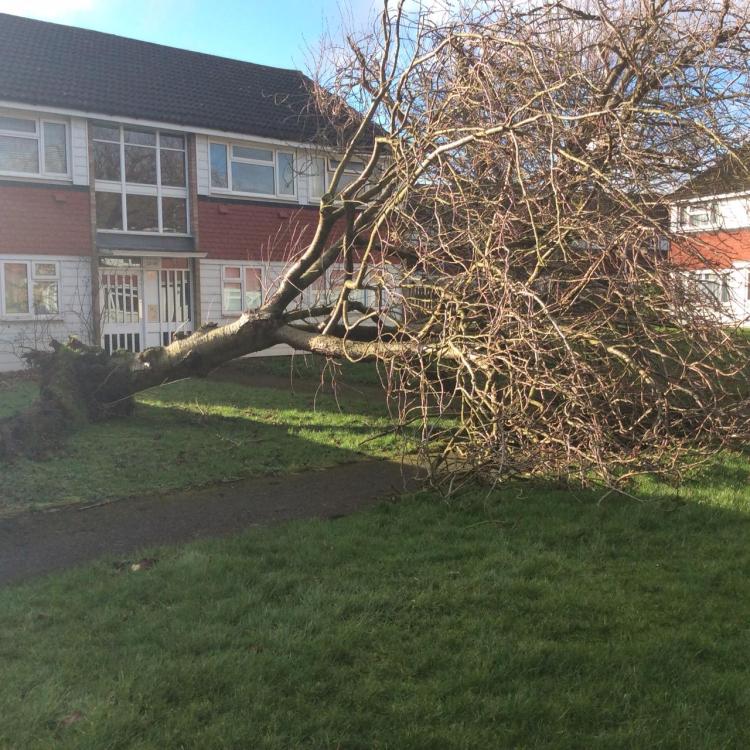
Many of the streets around my home have now got uprooted trees and the parks are almost unrecognisable from what they were 5 or 6 years ago with large open spaces where once tall oaks or pines once stood. The parks are all the lesser for it and so is my enjoyment of them. Given that it takes centuries for them to grow, it is high time that more of them were planted, not just in the new forests but also places where people are likely to encounter them in every day life.
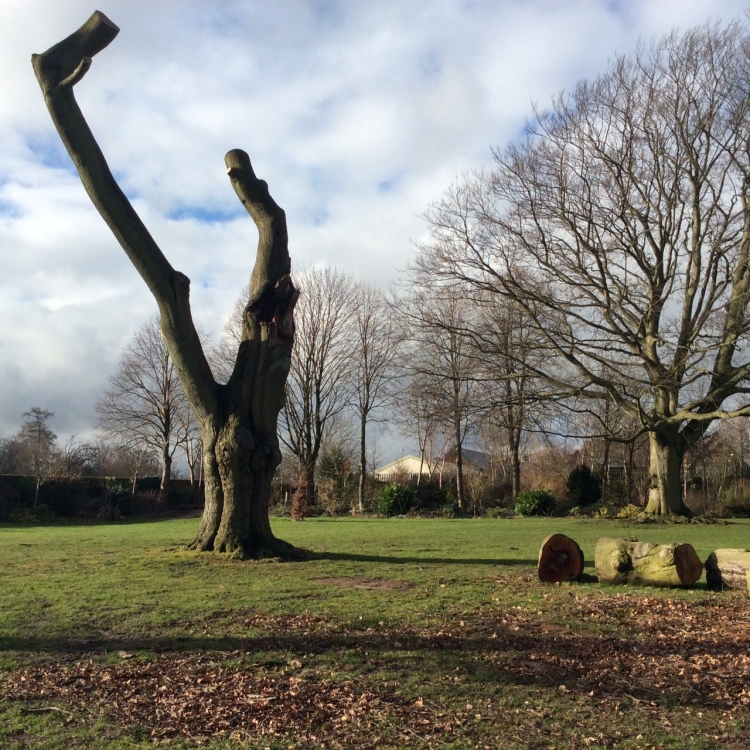
The fallen trees are entirely wasted, many turned into park benches, sculptures or borders to car parks but as even a very quick glance shows, we are pretty much all oaked out with barriers and benches but that is fortunate because there are so many less big trees around than just a few years ago.
On my walk I found the first signs of spring, white snowdrops, crocuses and daffodils racing up from the ground. In a few months Bluebells will appear but for how much longer as these flowers need the shade and nutrients that the tall oaks provide.
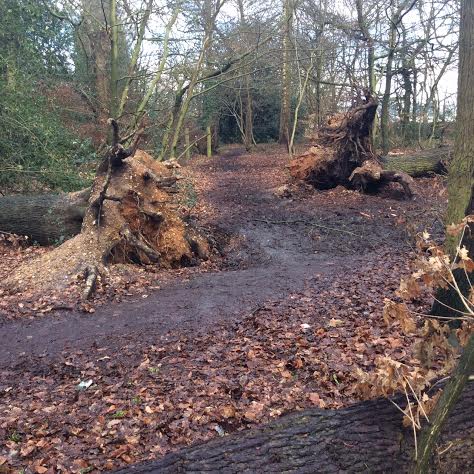
The nearest town to where I live has had sections flooded on and off for weeks. Many buildings flooded that were once on flood plains. The drainage provided by these drainage fields that were provided by nature, safeguarded by our ancestors but concreted over at an increasing rate since the 1980’s. A name such as “Water Lane” probably gives a clue that it isn’t the best place to build a hotel but not for modern planners.
Even as floods continue, plans are underway to run a large road through a section of park, destroying more greenery and oaks. Hundreds more homes being built on greenfields and allotments. The mayor insists they will create jobs and perhaps they will but who wants to live somewhere that at best has no greenery or trees and at worst is flooded for weeks every winter?
The whole cycle is ever worsening and self-perpetuating. Climate Change brings increased storms and rainfall which is bad enough as sodden soil makes trees more liable to be blown over. Less green space means all the rain concentrates in flooded areas and with less trees and green space to take off the edge of the extremes of the weather.
Last autumn I wrote on how I kept getting hit on the head by falling acorns, this year it won’t be so much of a problem. Lets hope they land somewhere good because as the saying goes, out of little acorns do great oak trees grow. As it is, walking through Albans wood today is like walking through a graveyard of giants after a most bloody battle.
I love oaks too and plant one wherever I live. The twig I planted 17 years ago when we moved to our current residence is now 40 feet tall. I plant them in honour of my father who served in the Second World War. The one I planted a few months after his death in 1989 in our backyard (I still lived at home then), is magnificent and tall. Each fall I’m amazed by its crimson foliage.
Hurricane Juan ten years ago destroyed a lot of trees in central Nova Scotia. It was like walking through a graveyard of trees for several years afterwards.
It is a shame more people who have the power to plan a community don’t give more regard to the forest and natural flood paths. I’d never build a house on a swamp, but I know entire subdivisions that were and flood each spring. It is not as if Nova Scotian are crammed together and there is no suitable land available, but everyone wants to be as close to the cities as possible. So they put houses and pavement over the land regardless of its condition.
Thanks for sharing your walk in the woods. I’ve always enjoyed the forest.
LikeLike
I really enjoyed this post Stephen! I learnt so much! Thank you for the great in site!
LikeLike
Thanks Kiwigirl. I’m glad you enjoyed it and thrilled it was informative too!
LikeLike
Thanks for your great comment. That is such a nice thing to do, planting oaks in honour of your father. Actually I think that is a great way to remember all the war heroes. When I was in Normandy 2 years ago, I collected seeds from British, American and Canadian WW2 cemeteries and will plant them when we move to the country. I remember the Canadian maples were so beautiful in September.
It is the same here, people building on every patch of open ground near the centre of places. Old houses with big gardens get knocked down and then big blocks of flats housing dozens of people where previously only 2 or 3 lives but the roads can’t be widened and it just adds to the stresses on inner-city schools and hospitals.
No-one ever goes to a modern town or city and says how great the buildings are but they do go to old parks and admire them. It’s time a percentage of all urban areas were guaranteed to be parks or woodland.
Here we have Greenbelts that were designed to stop big cities like London from sprawling outwards like somewhere like L.A. They are amazing places with miles of open farmland almost encircling the city. Smaller towns like mine though have weaker regulations. No-one can build on them and we are told they are protected until the town or county council changes the rules when it suits them often against the wishes of local people.
LikeLiked by 1 person
oops insight*
LikeLike
Very interesting report on our weather crisis here in the U.K.
I agree much of our loved countryside and coastal areas have now changed dramatically. I visited a beach on Sunday to see how the once popular beach has lost all its sand with may sized pebbles taking its place. So sad.
Mary
LikeLike
I think some money that is spent on other things or even “wasted” should be diverted to not just preserving the environment but making it more beautiful again like it used to be. They keep saying how they can’t afford proper coastal protection but surely that is about the most important thing they have to do. A few million pounds to look after Somerset is nothing compared to the amount that is spent each year.
So many beautiful beaches have been ruined this winter and several roch arches too. It is very sad.
Thanks for commenting Mary.
LikeLike
My previous house had seven oak trees in the yard. It was always a nuisance in the fall with the fallen leaves, but I loved the shade those trees gave in the summer. I miss them at my new house.
LikeLike
Wow Rosemarie, that sounds like my perfect garden! They do make a mess with their leaves but they are so nice in the summer. It might be just me but they seem to have a huge life-force about them. They’re wonderful, even in mid-winter with their bare branches.
LikeLike
True. The branches are beautiful in winter. Lovely lines against the sky.
LikeLike
Love the few old growth areas we have left in Washington state. But now even some of the second growths are getting bigger and fuller. We have mostly firs and cedars, very few deciduous trees in our forests, but still get the peace and quiet and nature feel.
Good post sir!
LikeLike
Man, that damage is brutal. That’s so sad about the trees.
LikeLike
Pretty sad. We have shifted a lot and always planted trees everywhere we went. Maybe it helps a little
LikeLike
Such an interesting post Stephen. Wish you were in charge of urban planning!
LikeLike